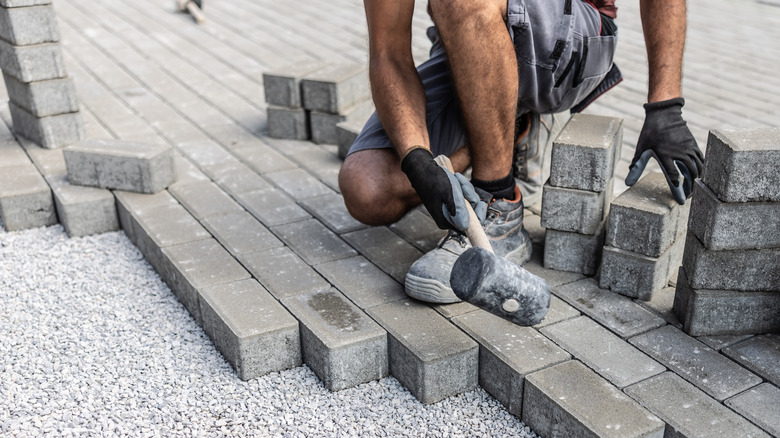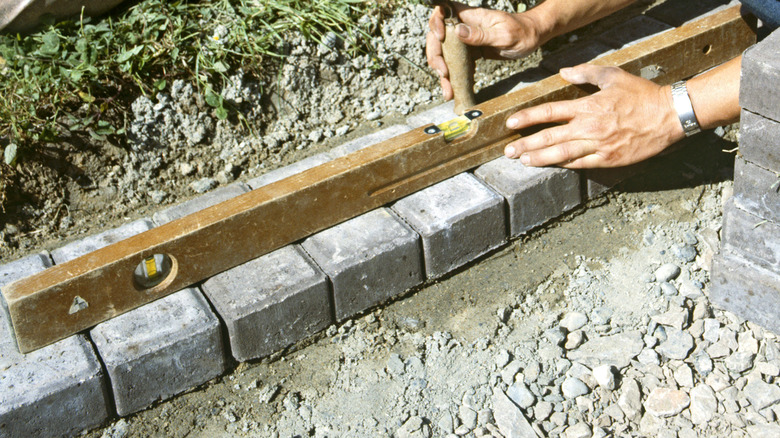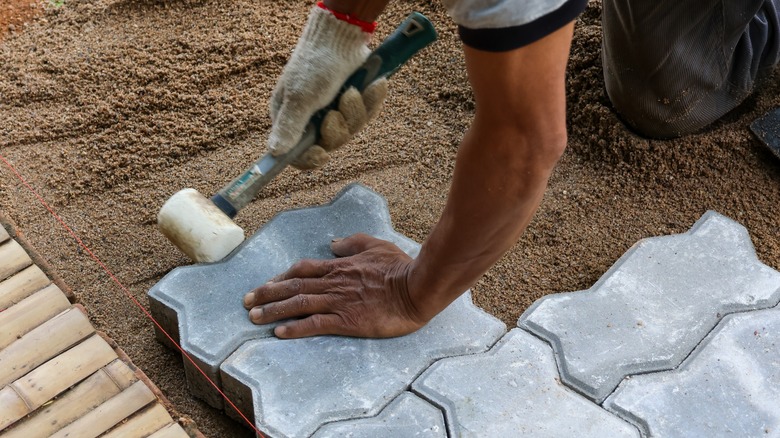The Best Base For Paver Landscape Edging (And 1 To Avoid)
When you are looking to create a DIY paver project for your yard, it's important to use the right base paver edging material. The base material delivers a stable foundation so the edging for the pavers will not slide around and shift. As a general rule of thumb, the best base material to use for the majority of landscaping paver projects is gravel or crushed stone.
Although most people focus on using the base to support the paver stones in the layout, you also need to make sure the edging has a sturdy base. Paver edging is the material used to create a border around the layout, and it helps to hold the pavers in place. You can use several kinds of edging, including stone, plastic borders, or aluminum borders.
The good news is that you can use the same base material underneath the pavers and the edging. When doing a paver layout, you should dig out the ground and extend the dimensions of the base material by about 6 inches on all sides beyond the edges of the paver layout, so it's just easier to use the same base everywhere. Keep reading to learn more about why the best base material to use for the edging for your paver layout is gravel, while also learning about a modern option to consider (as well as one option you should never use).
Why using gravel as a base material for your paver landscape edging is the best idea
The primary reason to use gravel as the base material for your pavers and edging is because it provides excellent drainage. When you're creating a paver layout in an area that collects water, gravel can help improve a muddy path by serving as a base layer that helps with drainage and keeps the pavers and edging material from sinking into the soggy soil. Gravel consists of irregularly-shaped pieces of rocks, which naturally creates voids that allow water to drain more easily. Additionally, gravel provides a stable and durable base for pavers and edging.
Gravel works well for all kinds of edging. If you decide to use vertical stones or bricks as the paver edging, gravel gives the edging stones the same solid base layer that provides sturdiness for the entire paver stone layout. Plastic edging material is another option to consider for your paver landscaping layout. You'll secure the plastic edging with long anchoring spikes or nails that at least go through the base layer. If you have an improper compaction of the base layer, though, the plastic could buckle, leaving it unable to keep the pavers in place. Gravel compacts well, making it a good choice to use with plastic edging to avoid issues with buckling. If you want a more durable edging material, consider aluminum. You'll also secure the aluminum edging with long stakes that at least penetrate the gravel base layer.
A modern option to use for a paver landscaping base – and a base you shouldn't use
A modern material you can use as a sturdy base layer for both the paver layout and the edging is interlocking polypropylene panels. You don't need to dig down as far for the paver layout when you use these panels, which naturally deliver a flat, sturdy base. After you create a shallow base layer of sand and gravel, you can place the panels over the top. Use a utility knife to cut the panels to fit the area. To account for the edging for the pavers, extend the edge of the layout of the panels a few inches. You can use stones or bricks as the edging to the paver layout when using these panels as the base. You also can use a plastic or aluminum edging, as you can drive the spikes through the polypropylene panels to hold everything in place.
As a final piece of advice, you should never use dirt as the base material for the pavers or the edging. Even though it is inexpensive and readily available, using dirt as a base layer is one of the most common mistakes to avoid when laying pavers and edging. Dirt doesn't drain well, causing it to shift and sink when it becomes wet. These issues are especially problematic when you use dirt under the edging, which has the pressure of holding the pavers in place. Using dirt as the base may cause the pavers to shift when heavy loads move across them, pushing the edging out of position.


